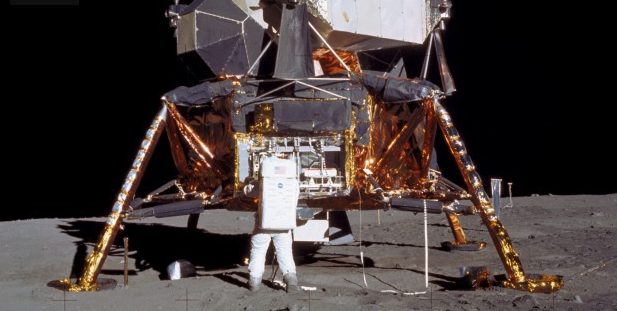
Sam Bankman-Fried Sentenced to 25 Years Jail
In a decisive turn of events that’s captured the attention of both the cryptocurrency world and the global financial community, Sam Bankman-Fried, the founder of the now-insolvent FTX[...]

A year’s worth of celebrations for the 50th anniversary of the first moon landing have begun this month. In light of this significant milestone, people are calling to attention the dramatic changes that have occurred within NASA, and globally, since that first expedition.

The impacts of the lunar landing have gone above and beyond what was expected. The venture resulted in significant advancements in technology, which are very much taken for granted today.
“There were remarkable discoveries in civil, electrical, aeronautical and engineering science, as well as rocketry and the development of core technologies that really pushed technology into the industry it is today,” the editor of NASA’s annual publication Daniel Lockney told Computer World.
The reasons for wanting to reach the moon have also shifted since that first successful expedition. In 1969, the priority was beating Russia to the moon, and claiming ownership over a victory that was sought after in a time of so much contention between global powerhouses. It was as much a battle of egos as it was a venture for science and technology. With less competition driving the projects, it is now more about exploration and discoveries, as opposed to claiming a win.
While we have seen some astounding successes since the launch in 1969, the difficulty of landing people on the moon still cannot be underestimated. Since the first landing in 1969, there have been over 50 American space expeditions with NASA attempting to land men on the moon, or orbit space – and over half of those have failed. There have been just as many plans to launch man back into space, with both George W Bush and Barack Obama announcing plans for space expeditions in 2004 and 2010 respectively.
Even 50 years after the original moon landing, the United States is still the only country to successfully land men on the moon. The desire to send people into space, however, has extended beyond the United States, and is now a global goal. Israel, China and India are all planning initiatives to send orbiters and landers to the moon within the next few years. Israel are planning to send their rocket, SpaceX Falcon 9, to the moon in early 2019.
“As soon as the spacecraft reaches the landing point it will be completely autonomous,” SpaceIL Ido Anteby told The Times of Israel. “The motor will break the craft and it will reach the ground at zero speed for a soft landing.
“In the first stage the Israeli flag will be put on the moon.”
As far as future plans go, NASA hopes to return astronauts to the moon, and eventually to Mars.
“Space is going to be much less expensive to go to, and that’s going to open up not just opportunities for people to fly, but because of the decreased cost, real opportunities for innovators to generate new ideas and to do things that have never been done before,” retired Astronaut Rusty Schweikart told the Associated Press.

All that is known for now is that expeditions to reach the moon, and further, will continue as long as there are people willing to work on it. With an infinite amount of ‘space’ to explore comes an infinite desire to learn, and investigate. Possibilities for exploration always have been, and will remain, unlimited. If the anniversary of the moon landing has taught us anything, it’s that we should not be restricted in our ventures and desires to explore.

In a decisive turn of events that’s captured the attention of both the cryptocurrency world and the global financial community, Sam Bankman-Fried, the founder of the now-insolvent FTX[...]

With the banning of engineered stone in Australia coming into effect, and this extremely popular choice for benchtops and splashbacks no longer an option, many Aussie families are now wondering[...]

Originating centuries ago in the canal-laden streets of Venice, Venetian Plaster continues to captivate the imagination of designers, architects, and homeowners alike. We have selected our Top 5[...]

When it comes to choosing the right butcher for your family and friends, you want to know you are going to the best. But where do you start? There are so many butchers in Sydney, from large to[...]